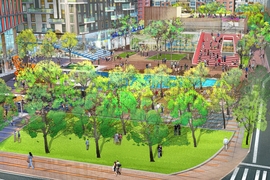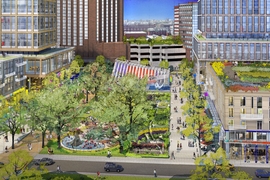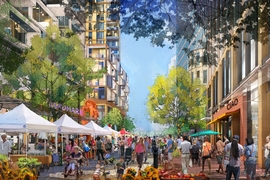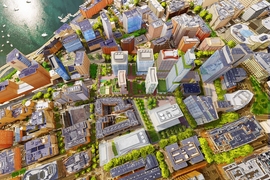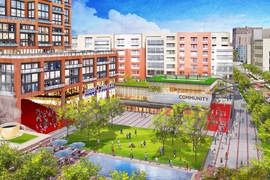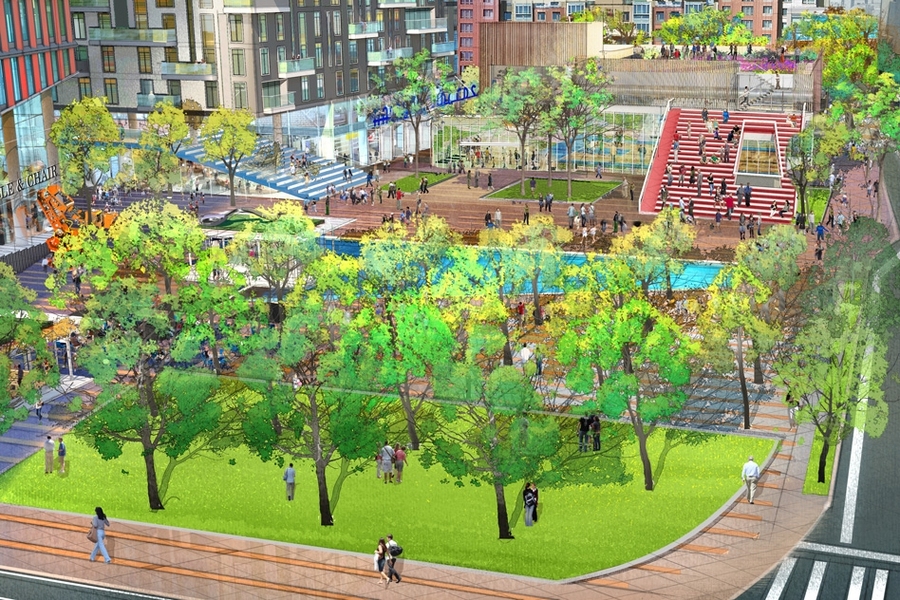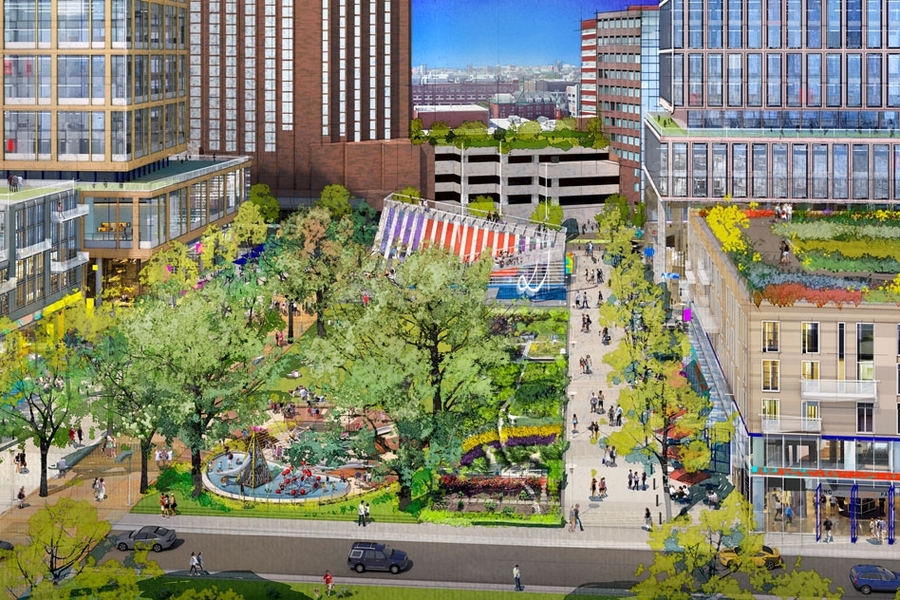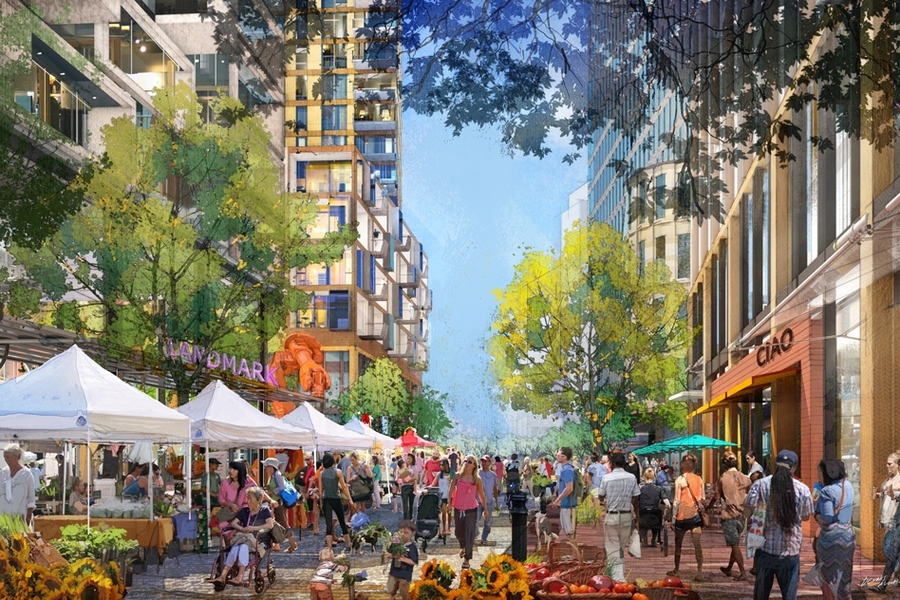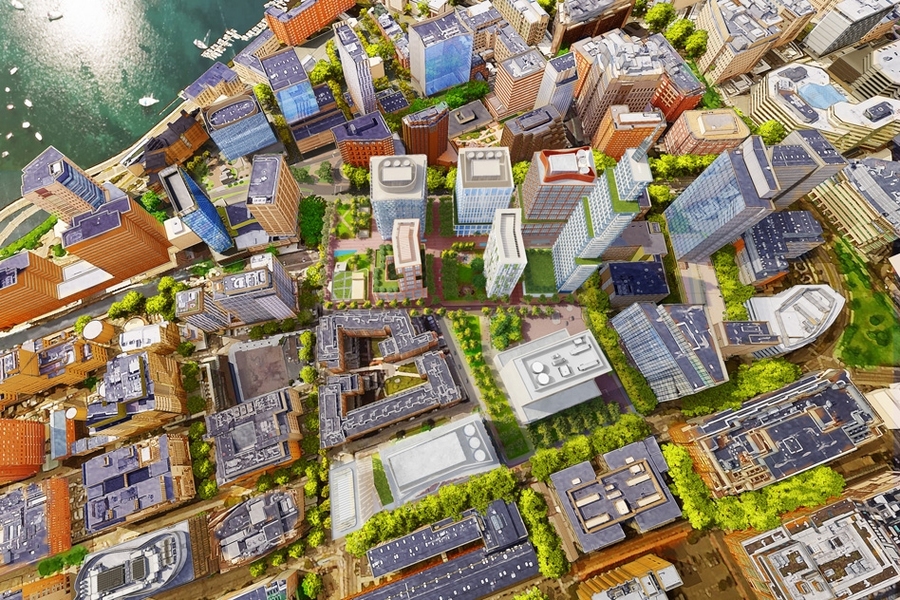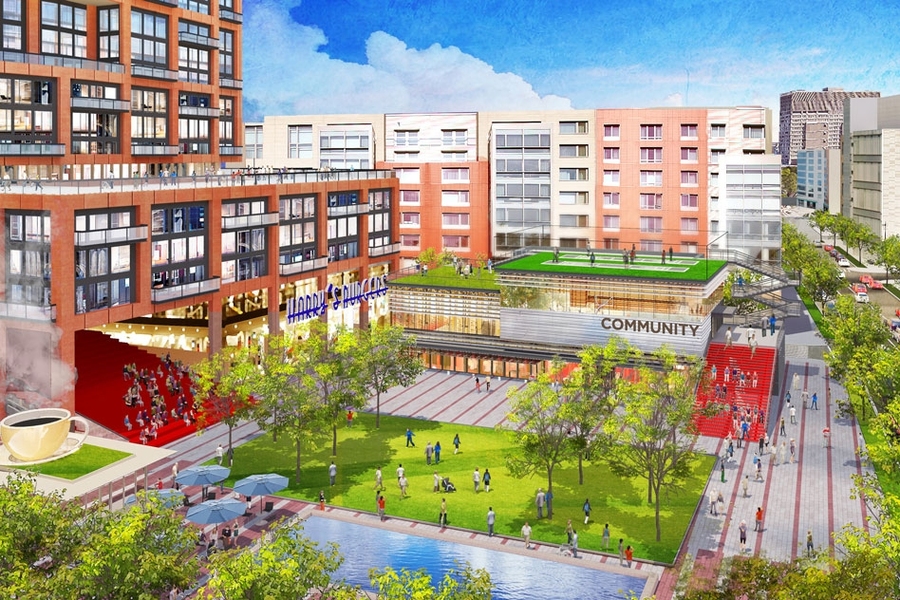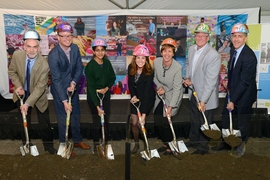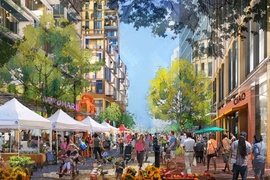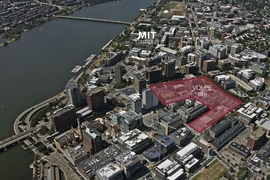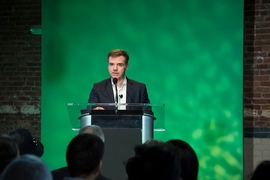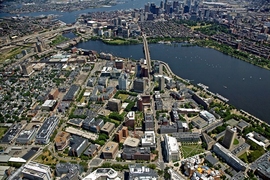On Monday night, the Cambridge City Council voted to approve MIT’s petition to rezone the site where the John A. Volpe National Transportation Systems Center currently operates.
In an agreement with the federal government, MIT will build a new headquarters for the Volpe Center on approximately four acres of the parcel, and now with the city’s zoning approval, the Institute will advance a detailed plan to redevelop the remaining 10 acres. MIT’s proposal includes housing, commercial and lab space, retail, open space, and a variety of active community uses.
“The Kendall Square innovation ecosystem has demonstrated a remarkable capacity to reinvent itself and evolve over time,” says MIT President L. Rafael Reif. “In that long evolution, the federal government’s decision to keep the Volpe Transportation Systems Center here with a reinvigorated presence, together with MIT’s plans to redevelop the remaining parcel, point the way to a compelling future. In guiding the redevelopment, our goal is to make the region’s innovation ecosystem even stronger, creating a dynamic and welcoming place to live and work, which will attract the industries of tomorrow and fuel academic and commercial research collaborations — all of which will help Kendall Square thrive over time by sustaining its creative evolution.”
The Institute’s zoning petition was developed through a collaborative process involving the MIT community, residents from abutting neighborhoods, the Planning Board, city staff, and the City Council. Its components include:
- approximately 1.7 million square feet of commercial development, including retail and active street uses;
- approximately 1,400 housing units, representing 40 percent of the development and including 280 permanently subsidized affordable units and 20 middle-income units;
- a minimum of 5 percent innovation space for entrepreneurship and incubator activity;
- approximately 2.5 acres of open space on the MIT-owned land, which is a minimum of 25 percent of the site;
- height limits ranging from 170 feet to 500 feet (one residential building is slated for a potential 500-foot height); and
- retail and active street uses in a minimum of 65 percent of ground floors on the main streets of the parcel.
“It’s the mix of commercial, residential, open space, retail, innovation space, active street use, and community space that will allow the Volpe site to ultimately become what we imagine,” says Israel Ruiz, MIT’s executive vice president and treasurer. “We’ve spent a lot of time looking at vital innovation centers around the world and know that each of these ingredients must be in place in order to create a highly functioning, nimble, and synergistic community.”
A zoning petition is essentially a request of a municipality to grant development rights that don’t currently exist. Development rights come in the form of heights, building sizes, and uses, and allow a property owner to develop its project in a manner that is most fitting for the site and its surrounding context. “The Volpe parcel is in the center of the city’s business district on a major transportation node,” says Steve Marsh, MIT’s managing director of real estate. “It’s the perfect location to build because it will augment the city’s thriving knowledge economy and will create a stronger sense of community for all involved.”
In exchange for commercial development rights, property owners are expected to provide benefits to the broader community. “We had some ideas about what might be beneficial for residents and businesses in the area, but we were delighted to work closely with residents, Kendall organizations, and city officials to learn more about the community’s most pressing needs in the context of our proposal,” Marsh adds.
As a result, MIT’s approved zoning petition includes commitments to a variety community benefits:
- implementation of a multiuse community path on MIT’s property in the Grand Junction railroad corridor;
- creation of an on-site community center with a job connector program;
- contribution toward transit improvement programs;
- support for ongoing innovation arts programs in Kendall Square;
- contribution to Cambridge’s fund for nonprofits; and
- support for ongoing community event programming in Kendall Square.
As required by the City of Cambridge, the project will also contribute to the city’s Affordable Housing Trust, which provides resources to individuals and families seeking housing. This is in addition to the approximately 300 low- and middle-income units that will be included in the development.
At Monday’s City Council meeting, Provost Martin Schmidt expressed the Institute’s appreciation to all involved in the zoning review: “MIT is grateful for the intense collaboration that has brought us all to this milestone in the Volpe process. From the outset, we knew that we couldn’t do it alone — and we didn’t want to. Along the way, MIT’s petition was improved by the aspirations of residents, the vision of public officials, and the careful examination by city staff.”
MIT hosted more than 80 community meetings to gather input over the last nine months. “We tried to collect feedback in a variety of ways,” says Sarah Gallop, MIT’s co-director of government and community relations. “We planned traditional meetings with presentations and discussions, interactive workshops to promote dialogue, and large-scale events including a block party and a HUBweek showcase called ‘MIT/Kendall Square: Innovation Playground,’ to demonstrate ‘what could be’ on the Volpe site.”
In response to the urging of MIT graduate students and the City Council, the zoning also includes a commitment to build 950 new graduate student units, which will allow the Institute to house more than 50 percent of its current graduate student population on campus.
At the recent groundbreaking of MIT’s newest graduate residence hall, MIT Chancellor Cynthia Barnhart said: “The new 450-unit facility will not only increase MIT’s graduate student housing stock, but will provide an exciting center for our students to connect with the world, including other members of the MIT community, residents of the City of Cambridge, Kendall-based entrepreneurs, and innovation and industry partners.”
Approximately 40 people spoke at Monday’s City Council meeting during the public comment period, predominately in favor of approving the zoning petition. Supporters cited the proposal’s community benefits and specific zoning components that they believe are good for the city — such as affordable housing, the community center, the Grand Junction community path, the job connector program, and the publicly accessible open space.
After a lengthy discussion among City Councillors, the body moved to approve the zoning petition. In summarizing the effort, Cambridge Mayor E. Denise Simmons said: “We have a good relationship with MIT, and we will continue to have productive dialogue. This is the first step in a series of steps.”
Now that the City Council has approved the zoning for the site, the next step for the Volpe project will be formulation of a planned unit development, or PUD, for the parcel. The PUD will further define the buildings, uses, and spaces for the overall proposal. This work will be done in conjunction with the Planning Board and city staff within the context of a public review process.
Once built and operating, MIT’s Volpe development will contribute an estimated $23 million in taxes annually to the City of Cambridge on what was previously a tax-exempt site.
More information about the Volpe project is available at volpe.mit.edu.
